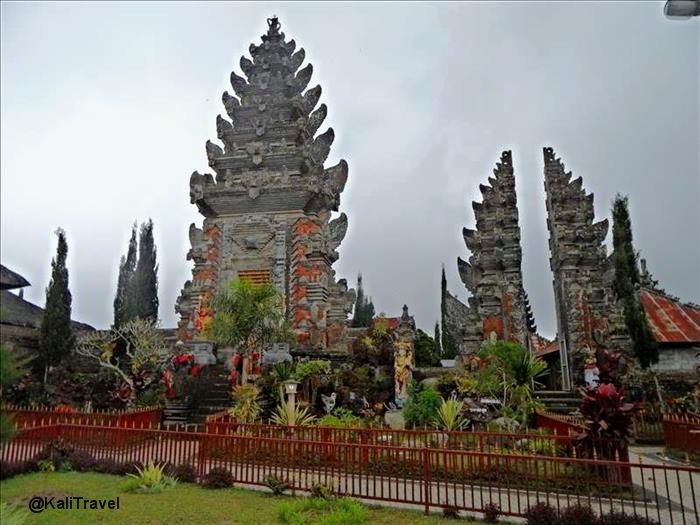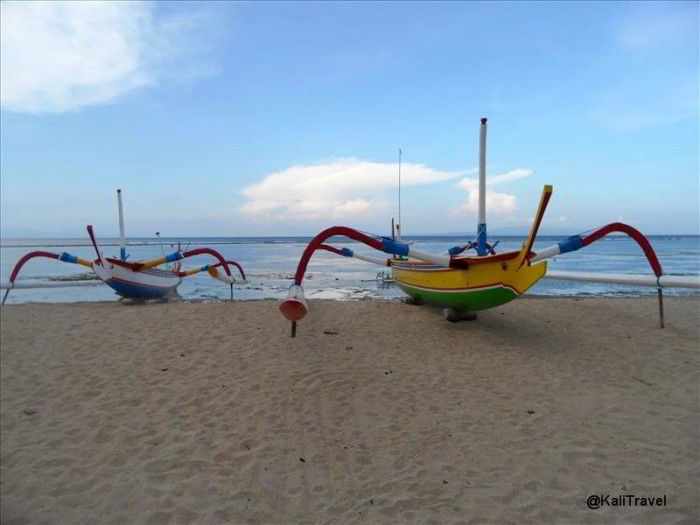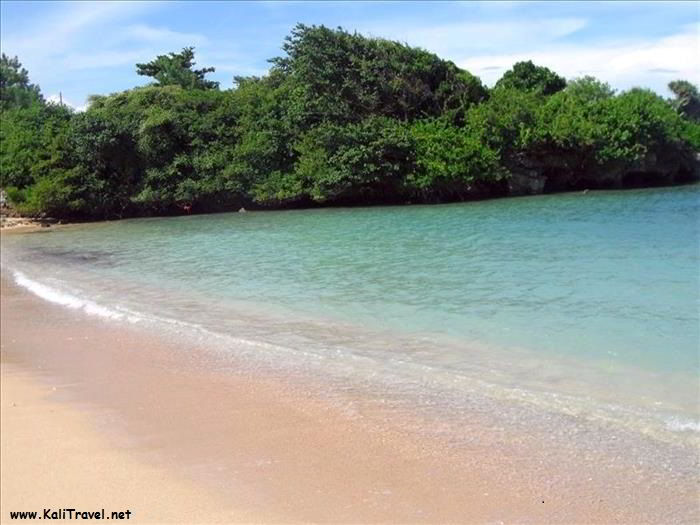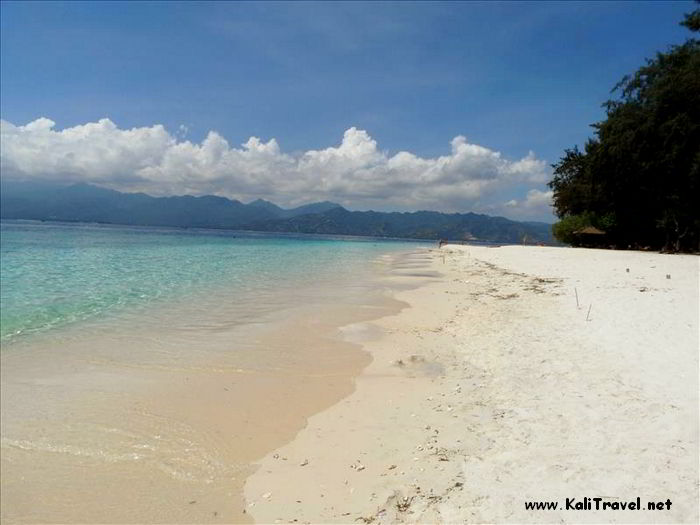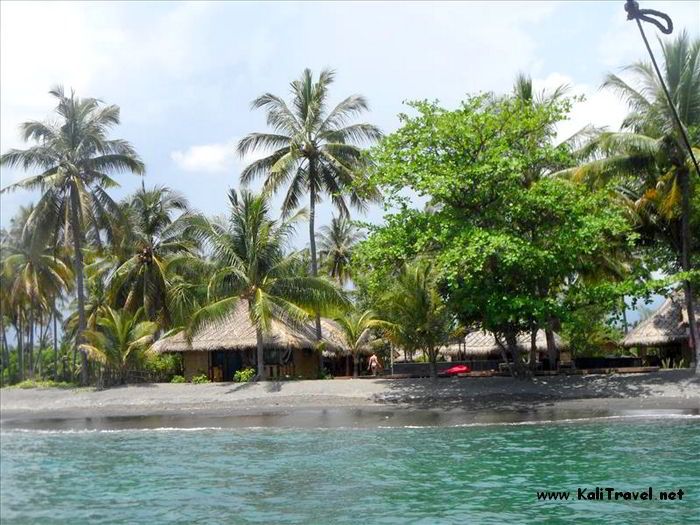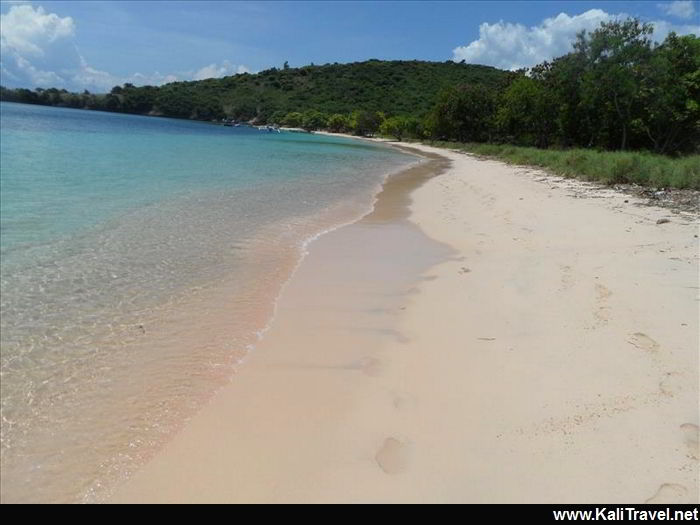What to see and do in Ubud on a visit to Bali.
Have you heard of Ubud in the highlands of Bali? The cultural heart of Indonesia’s favourite island, this mystical town lays in a perfect setting between rice fields and forests where streams cascade into sacred pools.
Cooler and greener than the sultry coast, Ubud’s laid-back atmosphere and picturesque surroundings makes the ideal base for a wellness holiday, or a getaway to see Balinese artistic life. Not far away, you’ll find awe-inspiring landscapes, such as the Tegallalang Rice Terrace and Tegenungan waterfalls.
Here’s just a few of the things you should visit in Ubud (Bali) and famous places to see nearby.
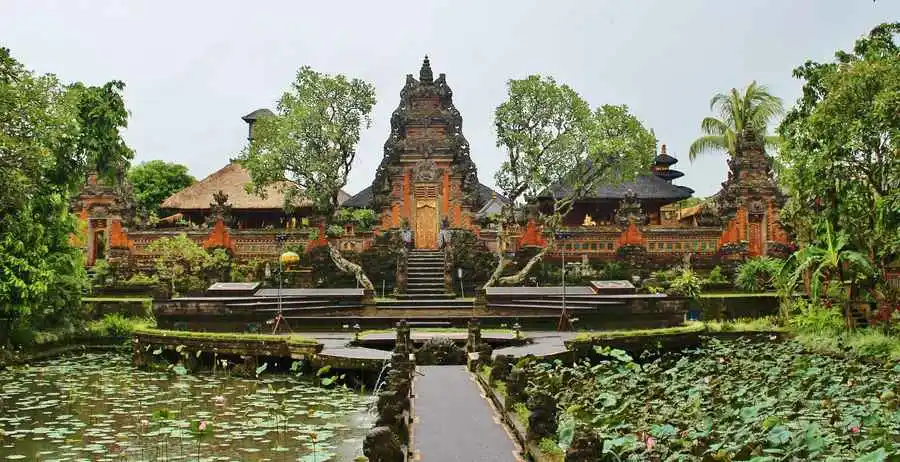
Planning a trip to Bali?
For a 1 week itinerary to discover the ‘land of temples’ start off with a few days lazing on sandy beaches, chasing sunsets along the coast, surfing the waves or getting blessed at Tanalot sea temple. Take a road trip along the less-visited East coast, to find the ‘real’ Bali where time seems to stand still. Then move up to Ubud to enjoy the heavenly highlands scenery.
Places to Visit In Ubud
Original text by Sharne and James who recently spent a month living in Bali. Thev’ve written this short guide to Ubud, one of the places that impressed them the most.
Ubud was our first destination in Bali, and it is, in my opinion, one of the best reasons to visit the island.
1. Saraswati Temple
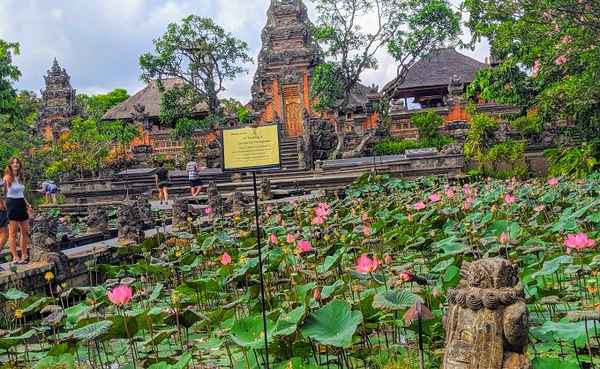
It’s only a short walk to Pura Taman Saraswati aka Saraswati Temple, one of the beautiful sites to visit in Ubud. Locally known as ‘Ubud Water Palace’, the water gardens are a peaceful place where flowering frangipani trees fringe a lotus pond and intricately carved statues of volcanic rock statues portray mythical Hindu Gods. It’s the sort of magical place that inspires travel quotes.
Elaborately crafted Kori gateways open on a sacred courtyard and the main temple which holds a padmasana shrine topped with a golden throne. Other features include the traditional pavilion and a striking statue of Sarasvati, the Goddess of learning, music and art (which is really the true spirit of Ubud).
The temple and gardens provide some much-needed tranquillity after walking along the busy streets outside! Luckily, a Balinese local had told us how to get across the roads – hold your arm out slightly, use your hand in a kind of ‘nudging’ motion and start to edge out into the road. Cars and motorbikes will slow down (they won’t stop completely) to let you cross.
Ubud’s large outdoor Art Market is near Saraswati Temple, so if you’ve got time and want to buy some hand-crafted souvenirs or clothes, it’s worth wandering around. You’ll find handmade kites, silk scarves, and woven hats and bags. Like many parts of Asia, you’re expected to bargain (while this is fun, remember that locals need to make a living)!
2. Ubud Monkey Forest
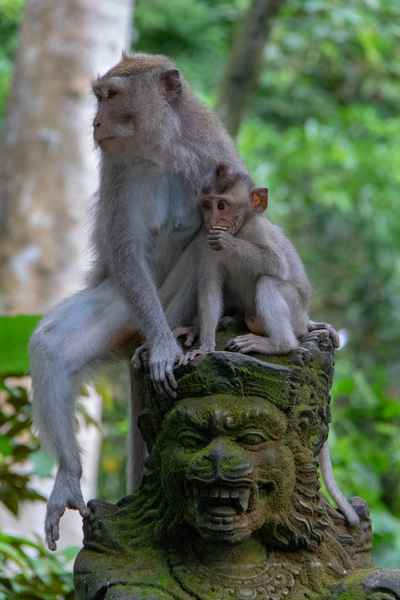
After the Saraswati Temple, walk to the Monkey Forest, the most famous place to visit in Ubud. Whilst you can see a few monkeys hanging around the streets, it’s worth buying a ticket to enter the Monkey Forest – you get to see them in their natural environment whilst taking in some fantastic views! It’s worth mentioning that the sanctuary is quite large, there are some 10,000 steps and uneven ground throughout the park.
Ubud Monkey Forest is quite unique, apart from being home to more than 1,000 Balinese long-tailed macaques, the shady paths lead to three ancient Hindu temples, and down to sacred grottoes beside a stream. In fact, it is one of the most famous cultural landmarks of Indonesia.
The monkeys might look cute but they are quite notorious for being pickpockets, so keep your valuables in a closed bag, firmly attached to yourself! You may see a few staff members wandering around, they do carry slingshots and we saw one used as a warning to a monkey who started to get a bit aggressive – both the monkey and the visitor were unharmed! However, take care to follow the clear signage around the forest, it’s there to keep you and the monkeys safe. Key points are do not make eye contact, feed, or touch the monkeys. If they touch or jump on you, just stay calm and still and they’ll move on.
Day Tours Near Ubud
If you’re wondering where to stay in Bali, Ubud is a great base for exploring the island. Spa resorts, yoga retreats and luxury villas are just some of the peaceful places to stay outside town, many conveniently providing a free shuttle into the centre. There are good restaurants too serving Bali cuisine and a beautiful vegan café.
The easiest way to get around Bali is to hire a private car. The driver acts as your guide, taking you to straight to the places to visit, no getting lost along the way. This is surprisingly cheap and you can work out the route before leaving or go on one of the standard island trips. Alternatively, hire a scooter to get around if you’re used to riding a bike at home.
3. Tegenungan Waterfall
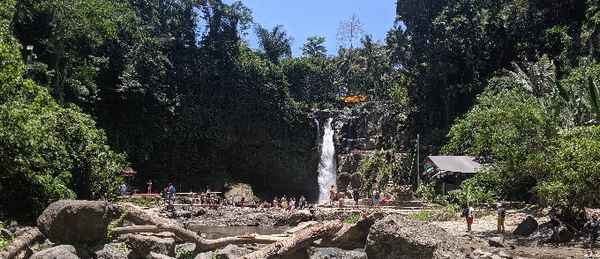
Tegenungan Waterfall is one of the closest waterfalls to Ubud, a 30 minute drive south in a picturesque spot surrounded by jungle.
The easiest way to get here is with a driver. No small feat to get to from the point where you’re dropped off, be prepared to go down a lot of steps (and worse, the trek back up!). Never mind, the rocky pool at the base of the falls is lovely for a cool swim! We went in October and it was packed with tourists, however it is very pretty and well worth a visit.
4. Gao Gajah (The Elephant Cave)
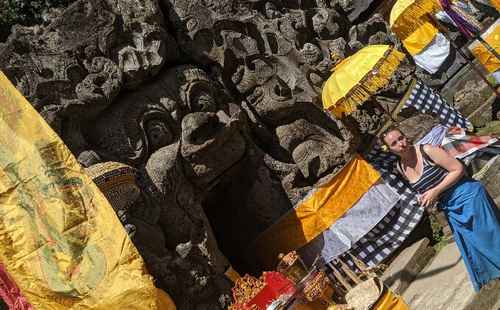
Like many holy places in Bali, you’ll need to wear a sarong to enter the ancient Elephant Rock Cave Temple (don’t bother buying a sarong from the stalls unless you want one as a souvenir, as you can hire them near the entrance).
The inside of Gao Gajah Temple itself is quite small, pass through the symbolic ‘demon’s mouth’ carved into the rock face a thousand years ago and into the mysterious temple cavern. The surrounding complex is worth exploring too, walk around the courtyard for a bit (see a holy pond with angel water sprouts) and you’ll find some shallow steps leading down into a ravine and the Petanu River.

A beautiful and tranquil landscape, it has lots of winding pathways and secluded little spots, well worth navigating the steps for! There’s also a small temple at the top of one of the pathways where a lady gave us a blessing with rice and water (in exchange for a donation).
5. Tegallalang Rice Terrace
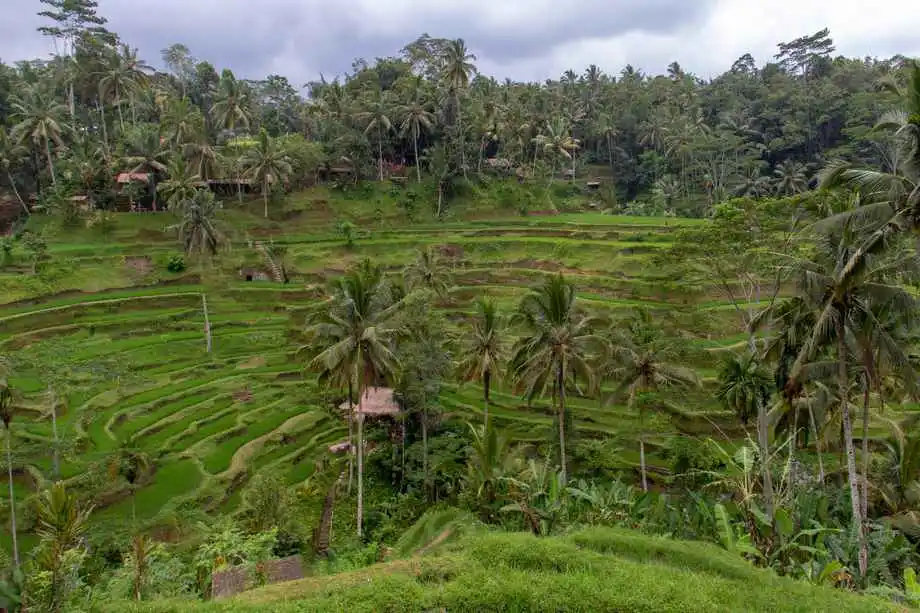
An absolute must-do is a visit to the Tegallalang Rice Terrace, also known as Ubud Rice Fields. A World Heritage Site with terraced paddy fields in a scenic valley which has been cultivated in the traditional way for centuries. Located some 20 minutes north of Ubud, the area has become a popular attraction for everyone visiting Bali.

Apart from the stunning view, there is a lot to do here other than meandering around (though I absolutely recommend doing this as well). For those interested in getting pictures for the ‘gram’, there are some cute little spots around where you can do just that (though you do need to pay for the privilege) – such as the infamous Bali Swing, and a man-made ‘bird nest’ to sit in. Meanwhile, if you’re after an adrenaline fix, there’s a cool zip line and ‘sky bikes’ that fly above the northern part of the vale.
Get here just before dawn to capture the sunrise before other tourists arrive, or visit in the afternoon and stay for sunset.
Dreaming of a holiday in paradise?
On a perfect 2 week itinerary to Bali, hop on a boat to Gili Meno, a paradise island where few tourists go. When you’re tired of the white sands and calm turquoise ocean, head off to explore the beautifully remote Pink Beach on the neighbouring island of Lombok.
Balinese Culture in Ubud
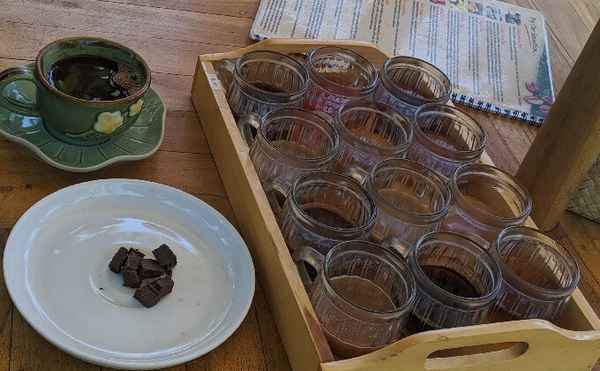
6. Kopi Luwak Coffee and Tea Tasting
For an authentic Balinese experience near Ubud, head over to a spice garden and coffee plantation for a Kopi Luwak coffee and tea tasting experience (often included in a day tour from Ubud). Very refreshing after a full day of exploring!
We were taken around to see cardamom plants, cocoa and cinnamon trees, and shown where the civets are kept, then taken to a table where a selection of different teas and coffee were brought out. You’ll also be asked if you want to try ‘kopi luwak’ – this is a coffee consisting of coffee cherries that have passed through a civets digestive system and then cleaned (if you’re thinking, does that mean it comes out of… yep, exactly that!). We decided to give it a go, but personally I preferred the lemongrass tea.
7. Traditional Barong Dance in Ubud Royal Palace
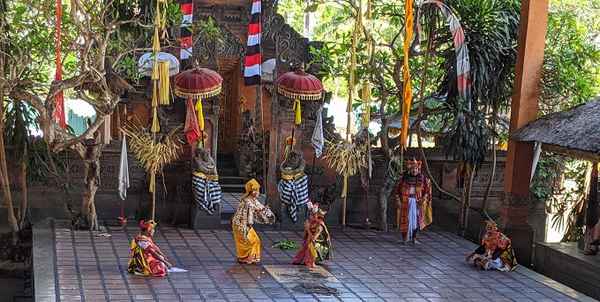
Looking to get a taste of the culture in Ubud? Then attend an evening performance of traditional Barong Dance in Ubud Royal Palace.
One of Ubud’s famous sites, the Puri Saren Agung complex was designed in pure Balinese style with lots of carvings and statues, and exotic gardens. A holiday residence for the local aristocracy and their artistic friends in the 1800’s, this was the beginning of tourism in Bali. The Barong Dance dance tells the story of the battle between good and evil through beautiful costumes, intricate movements, and exaggerated facial expressions.
Another way to get a sense of the culture, is to just walk through local vicinities. The main religion in Bali is Balinese Hinduism, and we often came across processions of people making their way to a temple with offerings. There are also small daily offerings in temples, shrines, and even on the ground which – these are called Canang Sari and are quite pretty.
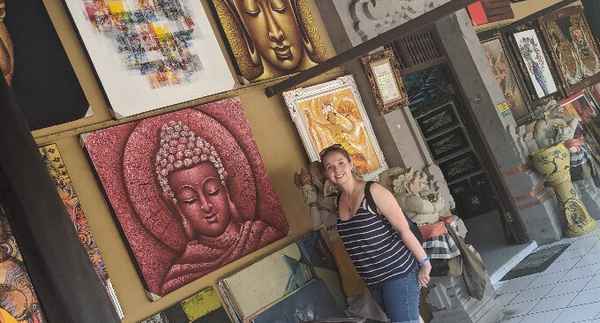
If you drive out around Ubud, you may start to notice a theme in some villages – some are based around a trade such as silver crafting, painting, glass blowing, or wood carving. We bought a few pieces of art whilst in an ‘art village’, they are amazing quality and I managed to haggle them down to a particularly good price.
It’s worth noting that you shouldn’t accept the price first given when shopping at the villages and outdoor markets as bargaining is expected. We were told to haggle by the local we bought our paintings from and we weren’t going to argue with that!
Useful Information on Ubud
How to Get around Ubud
It’s easy to get around Ubud yourself on foot or by renting a moped. If you would rather not drive (neither James nor I can drive a scooter, so it wasn’t really an option for us!), consider booking a tour or a private driver (chauffeur driven cars are quite cheap in Bali, usually arrange for either half a day or a full day). This is also a good option to cover a lot of ground in a short amount of time.
Best Time to Visit Ubud
The dry season in Bali runs from April through to October, temperatures are warm throughout the year, but obviously humid in the rainy season. The summer months from June to September are ideal for visiting Ubud, the weather is hot and sunny during the day with pleasantly cool evenings. July and August are the busiest months to visit.
How to Get to Ubud
Flights to Bali arrive at Denpasar International Airport 40 km away. From here either get a coach or a taxi straight up to Ubud in the highlands (taxis are super cheap). Takes 1-2 hours depending on traffic. What we did and would suggest is combining the stay with other resorts. For example, stay on the coast and then go up to Ubud. Otherwise, it is fun to hop around every few days especially if you’re in Bali for 2 weeks or so.
Useful Information on Bali
How to Get to Bali
From the UK and Europe in general, it will take between 15 to 18 hours to fly to Bali, dependent on where you stop over (not including the time spent waiting for connecting flights). We changed planes at Kuala Lumpur in Malaysia on the way to Bali, and the total travelling time was just over 19 hour.
Stopover times tend to increase the cheaper the flights get. On the way back, I had to wait 6hrs for the connecting flight to London as we took an early morning flight because the cost of the ticket was extremely cheap. To save money on your flight tickets flexibility is the key.
For anyone already in Indonesia, or wanting to combine Bali with a stay on another island, national flights are an option. Otherwise, public ferries and private fast boats have routes to many destinations.
Visas to Visit Bali
If you hold a UK citizen passport, you do not require a Visa to enter Bali on visits up to 30 days long. If you are planning on staying any longer you will require a Visa. If you are a citizen of another country, I would suggest checking out your governmental website, however over 160 countries do not need a one for Indonesia.
Currency in Indonesia
The currency for Bali is the Indonesian Rupia. There are many places to exchange money, but be sure to keep receipts as the majority will not allow you to convert any left-over money back to Sterling or other currencies without it. Also, most will not convert back any coins or notes less than 50,000 IDR.
Vaccinations for Bali
There are two main vaccinations that you need before you travel to Bali and these are Hepatitis A and Combined Diptheria, Tetanus & Polio Vaccination. Both of which should be taken at least two weeks prior to travelling. If you have existing medical conditions or a weak immune system, you may require more. See a full list here. Talk to your doctor before getting flights, and check with the Indonesian authorities, particularly regarding the latest Covid regulations.
About the Authors
James Banerjee and his partner Sharne have a passion for travelling to new destinations, money-saving hacks, and digital marketing. They currently run a personal finance blog at Smarter Finances.
Related Posts on Bali and Lombok
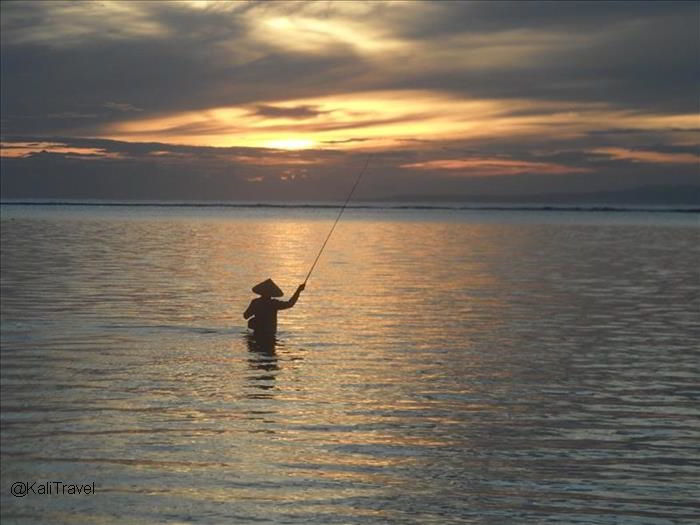
Sanur is a popular resort, conveniently located on the southeastern coast of Bali, where you can find traditional, beachfront 4* accommodation with true Balinese atmosphere and hospitality. Endless sands fringe a shallow bay which is protected by an off-shore reef…
Discovering Bali: Land of Temples
Discovering the land of Bali – Batur Temple, Tegallalang rice terraces and Ubud The most convenient, hassle-free and an amazingly economical way to see the sights is to hire a chauffeur driven car. Madi picked us up from the lobby in a smart, air-conditioned vehicle and headed inland…
We rented a moped to tour Bali independently… Up past Padang Bai – where fast boats leave for the neighbouring island of Lembongan, or to Lombok and the Gili Islands a couple of hours away – you’ll discover quiet beaches, and some extraordinanary sites.
Discovering Bali: Beaches and Sunsets
Discovering the beaches and chasing sunsets in Bali. Fabulous beaches… I just wanted to relax and enjoy beach life. A ride south on our faithful moped took us to Nua Dusa, and reputedly Bali’s best beaches, with sumptuous five-star resorts where you can enjoy luxury of being…
Gili Meno: A Castaway Paradise Island
Gili Meno is a tiny island in Indian Ocean where it meets the Pacific by the Wallace Line, a few kilometres off the northwest coast of Lombok and 35 kilometres east of Bali; sometimes called ‘Robinson Crusoe Island’, it’s just like a castaway island with fabulous, fine white sands…
Lombok: Rinjani Beach Eco Resort
Gliding through the ocean on our improvised ‘taxi’, a small longtail boat, Juan and I left the white sands of Gili Meno Island for the short trip across the waters to Lombok. From the sanctuary of our fabulous desert island retreat, I’d gazed across the straits…
Lombok: Pink Beach and Tanjung Luar Fish Market
Tangsi Beach (Pantai Pink), Lombok, Indonesia. Our second day day in Lombok and we were up before dawn…the haunting sound of the sunrise call to prayers from a village mosque hung in the air. Our hosts at the Rijani Beach Eco Resort obligingly offered us Lombok coffee and tropical fruit…
Discover the World with![]() the blog with a focus on independent travel
the blog with a focus on independent travel




